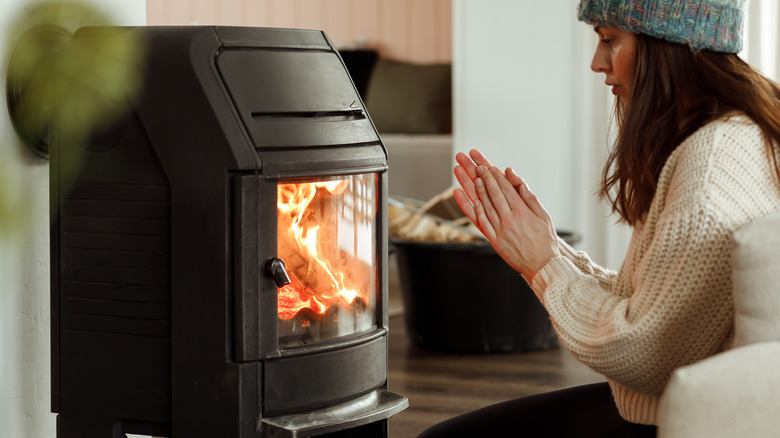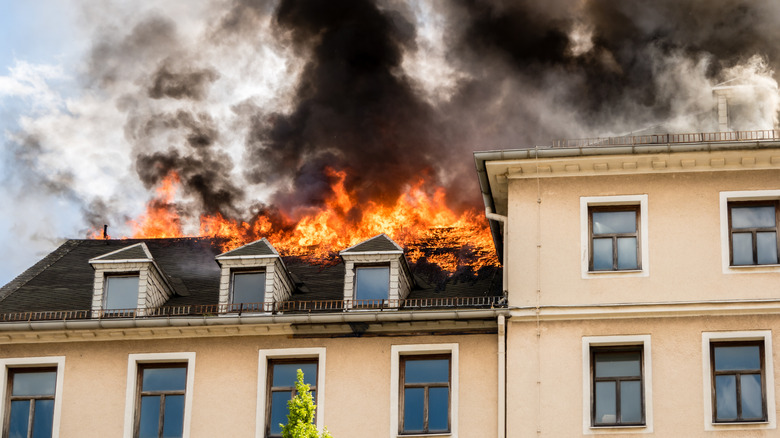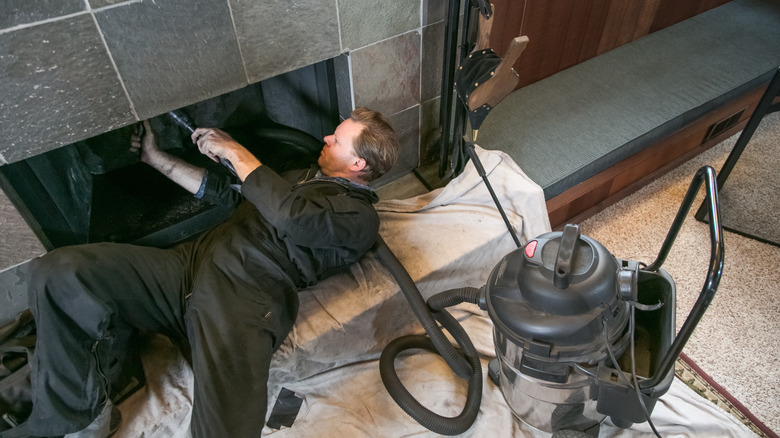What Is Creosote (& Should Wood Burning Stove Owners Be Scared Of It)?
If you're a homeowner with a wood burning stove or fireplace, you have probably heard of the dreadful term creosote. Creosote is a dark, tar-like substance that forms as a byproduct of burning wood in fireplaces or wood-burning stoves. It is composed of unburned wood particles, tar, and other organic compounds. When wood is burned, volatile compounds are released into the chimney along with the smoke. As these hot gasses cool down within the chimney, creosote condenses and solidifies on the chimney walls. Over time, repeated burning of wood leads to the accumulation of creosote within the chimney. In this way, creosote is something that all wood-burning stove or fireplace owners should be aware of and have maintained annually by a professional in order to avoid several dangers associated with this substance.
Most importantly, creosote buildup in a wood-burning stove or fireplace poses a significant fire risk due to its highly flammable nature. Over time, this creosote accumulation becomes a combustible layer lining the walls of the chimney that can ignite with intense heat. The risk of a chimney fire increases as creosote buildup acts as fuel, easily catching fire and sustaining a blaze that is difficult to see or reach. Even extinguishing the fire in the stove may not put out the chimney fire, requiring firefighters and an emergency team. Meanwhile, this blaze can spread throughout your home, posing safety concerns for those who live there. Undoubtedly, regular cleaning and maintenance are crucial to remove dangerous creosote deposits.
Additional dangers of creosote
The potential fire hazard from built-up creosote within a wood-burning stove or fireplace is unfortunately not the only danger associated with these house-warming features. It can also lead to various other dangers within the home. Creosote accumulation poses a threat to the structural integrity of the chimney. The tar-like substance is acidic and can corrode mortar joints and chimney liners over time. This corrosion weakens the structure, increasing the risk of chimney collapse, which can be financially and physically devastating for homeowners.
Secondly, creosote buildup hampers ventilation by narrowing the chimney passage. As creosote thickens on the inner walls, it restricts the flow of smoke and gasses, leading to poor draft. This can result in smoke backing up into the home, causing respiratory issues for occupants. The compromised ventilation also increases the likelihood of a chimney fire, as the lack of proper airflow encourages the accumulation of flammable gasses.
Finally, incomplete combustion of wood due to restricted airflow can lead to the production of carbon monoxide. Creosote buildup exacerbates this risk, as the byproducts of incomplete combustion may contain elevated levels of carbon monoxide. The colorless, odorless gas can infiltrate the home, causing carbon monoxide poisoning. This poses a severe health risk to homeowners, as exposure can lead to symptoms such as headaches, dizziness, nausea, and in extreme cases, fatalities. Therefore, burning a fire in a stove or chimney without regular inspections can lead to adverse consequences for your family.
How to deal with creosote build up
Annual maintenance can provide safety and peace of mind for you and your family as you cozy up in front of a few glowing logs. It's best to hire professional chimney sweeps who possess the expertise and tools to safely remove creosote deposits. Regular inspections can help identify early signs of creosote accumulation and prevent potential hazards. While it can be tempting to inspect your chimney yourself, it's highly recommended to utilize professionals in order to guarantee safety while burning wood in your home.
To prevent creosote buildup in the first place, homeowners can adopt proactive measures. Burning seasoned hardwoods, which have lower moisture content, produces cleaner and more efficient combustion, reducing the formation of creosote. Additionally, adequate airflow is crucial, so homeowners should ensure proper ventilation by opening the damper and leaving stove doors ajar. Another practice to adopt is to burn wood only when it's completely dried. Dried wood burns more thoroughly whereas wet wood does not, and releases more smoke, fueling the buildup of creosote.
One last preventative measure is to warm the flue before starting a fire. Condensation forms more easily with a cold flue, so warming it may help deter additional residue from lingering. To do so, roll a newspaper into a long baton and light one end on the fire, holding it in the stove and up toward the flue. Once the smoke filters upwards, the flue has warmed and you may safely light a fire.


